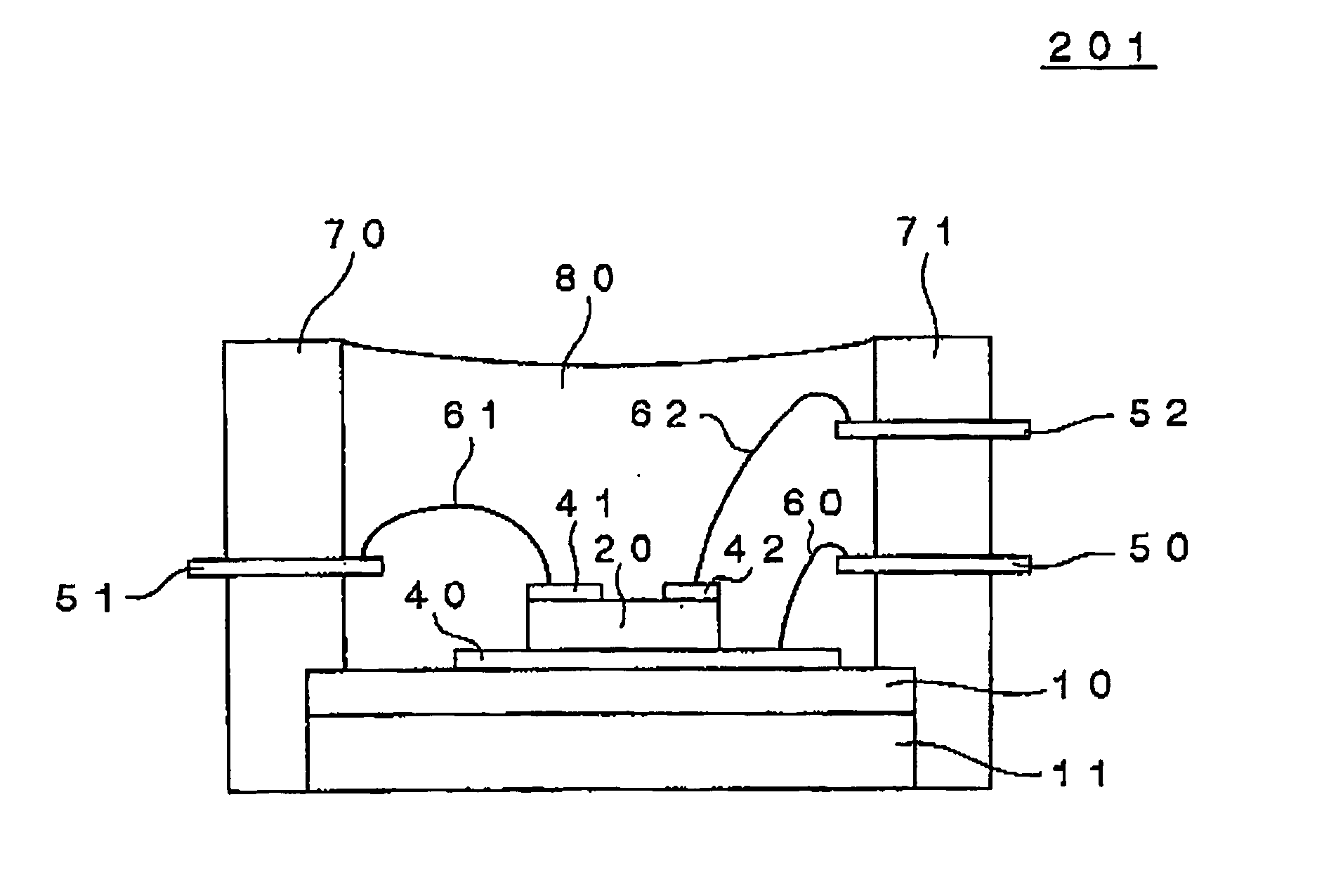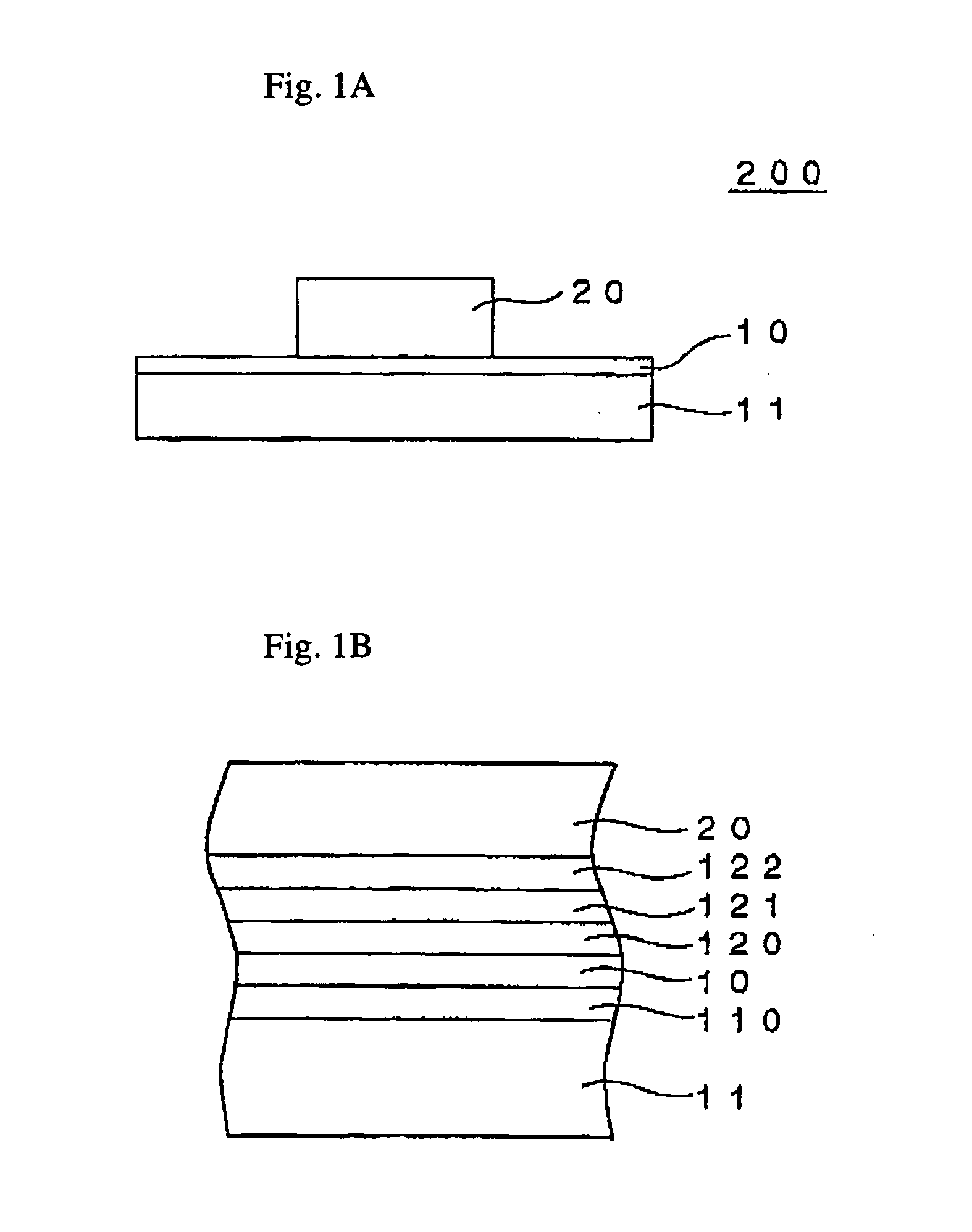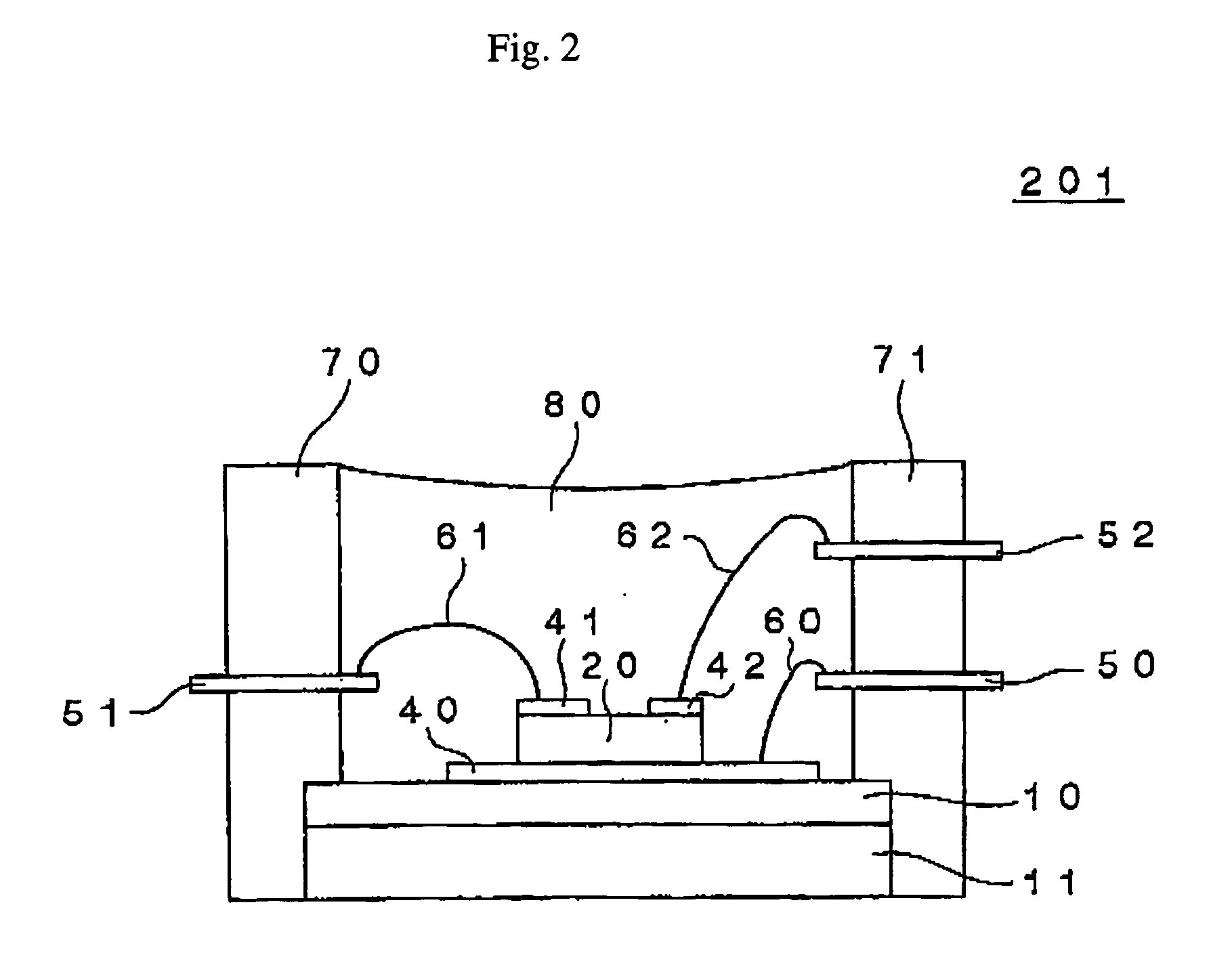Semiconductor element heat dissipating member, semiconductor device using same and manufacturing same
a technology of semiconductor devices and heat dissipating components, which is applied in the direction of semiconductor devices, semiconductor/solid-state device details, electrical apparatus, etc., can solve the problems of high production cost, increased heat generation, and difficulty in ensuring a sufficient surface smoothness, so as to achieve high heat dissipation and high adhesion properties , the effect of semiconductor device production
- Summary
- Abstract
- Description
- Claims
- Application Information
AI Technical Summary
Benefits of technology
Problems solved by technology
Method used
Image
Examples
example 1
[0144] In Example 1, an example is described in which a semiconductor device with a similar structure to that of the semiconductor device shown in FIG. 1A was produced through a process of forming an electrically insulating amorphous carbon film on a conductive substrate by a plasma CVD method, and in which the semiconductor device was evaluated.
[0145] A metal plate containing 35 at. % of Cu and 65 at. % of Mo was processed to form a plate with a length of about 9 mm, a width of about 13 mm, and a thickness of 3 mm, thereby obtaining a heat dissipating plate (conductive substrate) for a semiconductor element heat dissipating member. Next, the heat dissipating plate was cleaned, and then a Cr film having a thickness of 0.2 μm was formed on one side of the heat dissipating plate by a sputtering method.
[0146] Then, the heat dissipating plate having the Cr film formed on one side thereof was laid on a sample stage in a vacuum chamber of a plasma CVD apparatus, and the vacuum chamber w...
example 2
[0157] A metal plate containing 35 at. % of Cu and 65 at. % of Mo was processed to form a plate with a length of about 8 cm, a width of about 24 cm and, a thickness of 3 mm, thereby obtaining a heat dissipating plate (conductive substrate) for a semiconductor element heat dissipating member. Next, the heat dissipating plate was cleaned, and then a Cr film, an electrically insulating amorphous carbon film, an aluminum film and a Ni film were successively laminated on one side of the heat dissipating plate in the same way as in Example 1. Thereafter, six IGBT elements (with a length of about 9 mm and a width of about 12 mm) and six diodes (with a length of about 6 mm and a width of about 11 mm) were soldered thereon.
[0158] A plastic (resin block) was molded such that the plastic was disposed along the circumference of the heat dissipating plate, bus bars were provided, and electrodes disposed in contact with the IGBT elements and the diodes were connected to the bus bars by wire bond...
example 3
>Production of Semiconductor Device>
[0161] A semiconductor device of Example 3 (hereinafter, referred to as a “semiconductor device D”) was produced in the same manner as in Example 1, except that the electrically insulating amorphous carbon film was formed by using an RF plasma CVD apparatus.
[0162] The formation of the electrically insulating amorphous carbon film by using the RF plasma CVD apparatus was conducted as follows. First, the heat dissipating plate with the Cr film formed thereon was placed in the vacuum chamber of the RF plasma CVD apparatus, and the vacuum chamber was deaerated to 3×10−3 Pa or lower. Next, methane as a raw material gas was introduced so as to make the pressure of the vacuum chamber 13.3 Pa. Then, RF voltage of 13.56 MHz was applied to the sample stage to form the electrically insulating amorphous carbon film containing hydrogen with a thickness of 1 μm. The content of hydrogen in the electrically insulating amorphous carbon film was measured by an ERD...
PUM
| Property | Measurement | Unit |
|---|---|---|
| elastic modulus | aaaaa | aaaaa |
| thickness | aaaaa | aaaaa |
| pressure | aaaaa | aaaaa |
Abstract
Description
Claims
Application Information
 Login to View More
Login to View More - R&D
- Intellectual Property
- Life Sciences
- Materials
- Tech Scout
- Unparalleled Data Quality
- Higher Quality Content
- 60% Fewer Hallucinations
Browse by: Latest US Patents, China's latest patents, Technical Efficacy Thesaurus, Application Domain, Technology Topic, Popular Technical Reports.
© 2025 PatSnap. All rights reserved.Legal|Privacy policy|Modern Slavery Act Transparency Statement|Sitemap|About US| Contact US: help@patsnap.com



